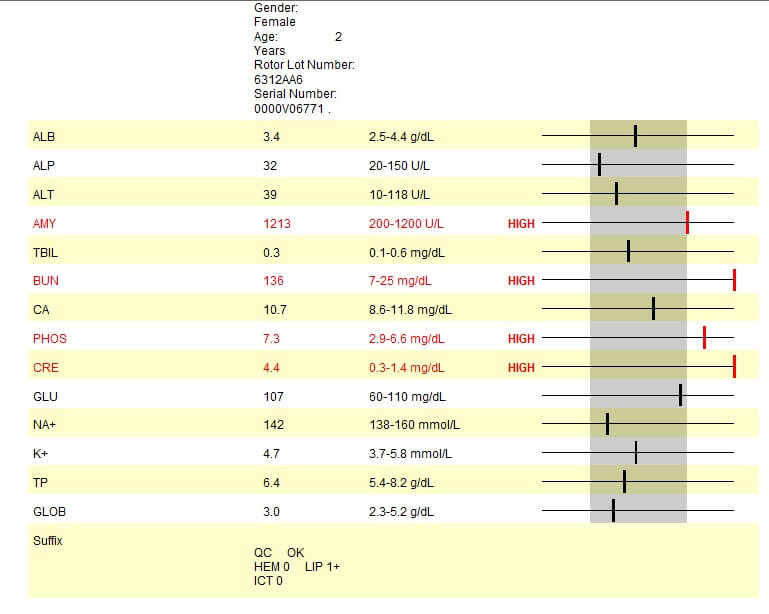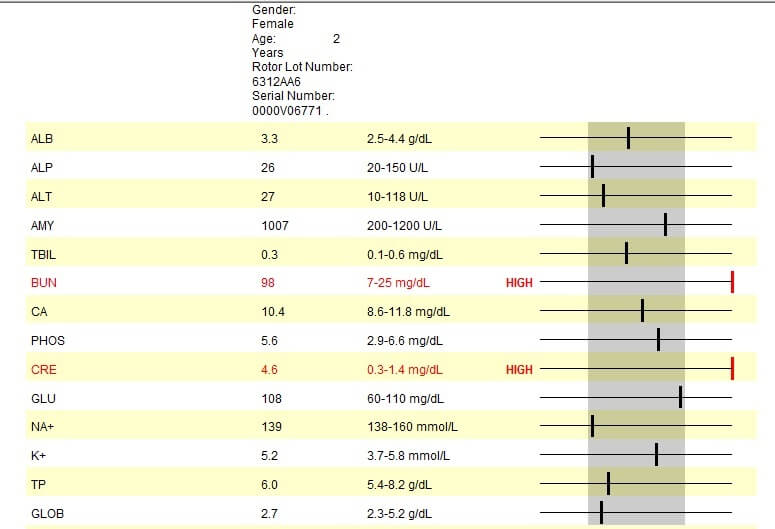With every surgical case where an animal is undergoing general anesthesia, bloodwork is always very highly recommended. Your doctor requires it on you before surgery, so why wouldn’t it be required for your animal? Well, while we can’t absolutely REQUIRE pre-anesthetic bloodwork, he is an example of how important it is.
“Dobbie*”, a 2-year old Doberman Pincher, presented to our clinic for a routine spay. On her pre-anesthetic exam, she was the picture of health: great body condition, perfect color mucous membranes, good temperature etc. Blood was drawn for pre-anesthetic bloodwork. The cbc (complete blood count), measures the red blood cells, white blood cells, and platelets that are circulating in the blood. White blood cells tell us if there is a possible infection that needs to be addressed and platelets tell us if the animal may have clotting issues that may prevent surgery. Red blood cells can tell us if there is unknown bleeding or dehydration.
Red blood cells (in a simple explanation), are produced by the kidneys. If the kidneys are not functioning correctly, this can be seen in a decrease in red blood cells (anemia). Not every kidney disease shows as anemia and not every case of anemia means kidney disease. “Dobbie’s” red blood cells were a little lower than they should be: no big deal. When we got her chemistry back though, we were completely blown away.

Here we have four values that show as high: AMY, BUN, PHOS, and CRE.
AMY: This value is related to the function of the pancreas. While her value is high, it is not high enough to be a value we are worried about.
BUN, CRE, and PHOS: All three of these values relate to kidney function. BUN and PHOS do not generally increase until the kidneys lose about 75% of their function. With the kidneys having such a reduced function, this led to the decrease red blood cells.
As you can see, this animal was not fit to undergo anesthesia, let alone surgery. We were able to catch this disease in it’s early stages and start treatment right away. By switching her to a kidney disease diet we can limit the strain on the kidneys. Unfortunately, her kidneys may never go back to 100%. By being aware of her condition though, the owners can bring her in at the first sign of problems and her lifespan will be greatly improved versus not having done the bloodwork to begin with.
“Dobbie” was treated in the hospital and bloodwork was repeated 10 days later:

As you can see, AMY and PHOS are back within the normal range and the BUN has dropped drastically. Although CRE is still pretty elevated, this can be due in part to dehydration and since the BUN is so much improved, this is great news and we can continue to monitor her for issues in the future.
This is not the only condition bloodwork can catch. We can see problems with:
- The liver (which processes the anesthesia)
- Clotting factors that indicate an animal may not stop bleeding like normal
- Infection
- Dehydration
For more specific details of what we look for when running bloodwork, visit What Do Those Lab Tests Mean by the Washington State University, College of Veterinary Medicine.
*Name changed for privacy reasons

